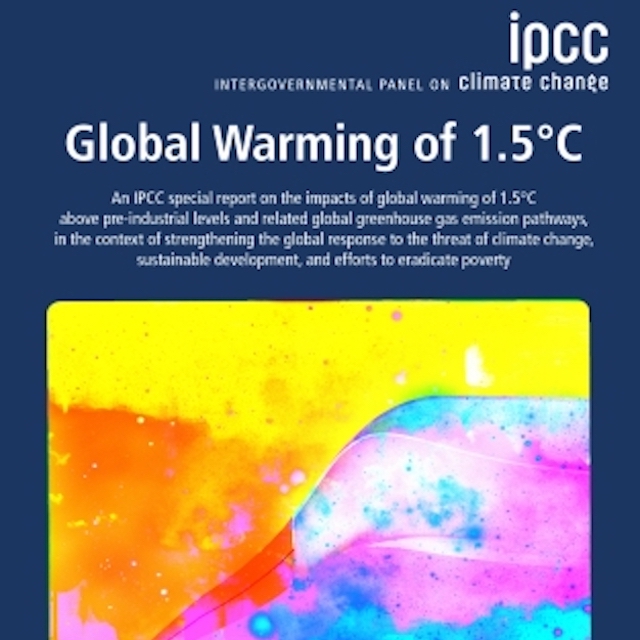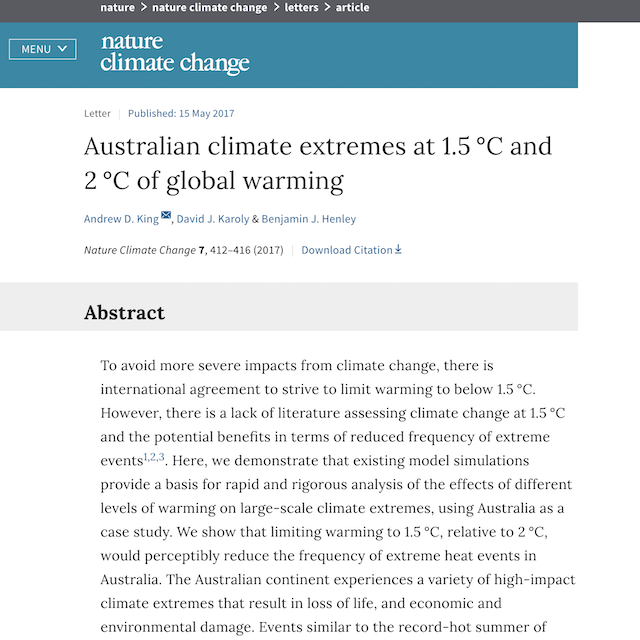by Ian Macadam
The Intergovernmental Panel on Climate Change (IPCC) recently released its special report on Global Warming of 1.5°C. It stated that human-induced warming of the planet reached approximately 1°C above pre-industrial levels in 2017.
An international group of scientists has now forecast the likelihood global warming will exceed 1.5C over the next 5 years. This is one of the thresholds of the UNFCCC’s Paris Agreement, which aims “to strengthen the global response to the threat of climate change by keeping a global temperature rise this century well below 2°C above pre-industrial levels and to pursue efforts to limit the temperature increase even further to 1.5°C”.
The researchers found there is “virtually no chance” the average surface of the planet averaged over the 2017-2021 period will be greater than 1.5°C above the pre-industrial period.
However, the scientists suggest there is a 10% chance that global warming will temporarily exceed 1.5°C for at least one year during this period. There is a higher chance warming will exceed 1.5°C over periods shorter than one year. They calculate there is a 38% chance that at least one month will be 1.5°C warmer than the pre-industrial period.
These forecasts are important because:
- If the average temperature of the globe rises above 1.5°C of warming for periods of months or years, it is a sign the planet may be close to one of the thresholds for warming of the long-term average temperature in the Paris Agreement. The term “long-term average” is not defined in the agreement, but it is generally understood to refer to an average over several decades.
- The impacts of global warming of 1.5°C on society and the environment are likely to be significant, with projections of increased severity of heatwaves and heavy rainfall and other changes to our climate. The IPCC report on Global Warming of 1.5°C details these impacts. Work by the Australian Research Council’s Centre of Excellence for Climate System Science specifically describes some of the possible changes in extreme climate events in Australia. However, not all of these impacts would necessarily occur if the 1.5°C threshold were exceeded for a limited time.
- Temporary exceedances of 1.5°C will generate media interest. It will be important to communicate that temporary warming above 1.5°C does not imply the Paris Agreement threshold has been breached, although it may forewarn this.
Explainers
- The 1.5°C threshold for global warming in the Paris Agreement relates to the increase in the long-term average temperature of the planet since the pre-industrial period (before human activity led to a rapid increase in the amount of greenhouse gas in the atmosphere). This is typically calculated by averaging the temperature of the globe over a period of several decades. However, the global average temperature for any given year can vary significantly from the long-term average temperature due to naturally-occurring phenomena such as El Niño. This variability can be large enough to temporarily elevate the temperature above the 1.5°C threshold, even if the long-term average temperature is less than 1.5°C above that of the pre-industrial climate. The likelihood that the threshold is exceeded increases as the long-term average temperature increases towards 1.5°C of global warming. Therefore, the new forecasts provide a way of giving prior warning that the Paris Agreement 1.5°C threshold could soon be exceeded.
- The forecasts are based on state-of-the-art modelling systems used by agencies in Europe, Japan and the US to make predictions of climate conditions over the coming decades. These systems “provide reasonably reliable probabilities of exceeding warming thresholds”2. The systems employ models similar to those used to generate climate projections that extend to later in the 21st. However, in contrast to these longer range projections, they account for the current state of the climate system (e.g. whether there is currently an El Niño) and so are more accurate for the 5-year time-scale of the forecasts.




